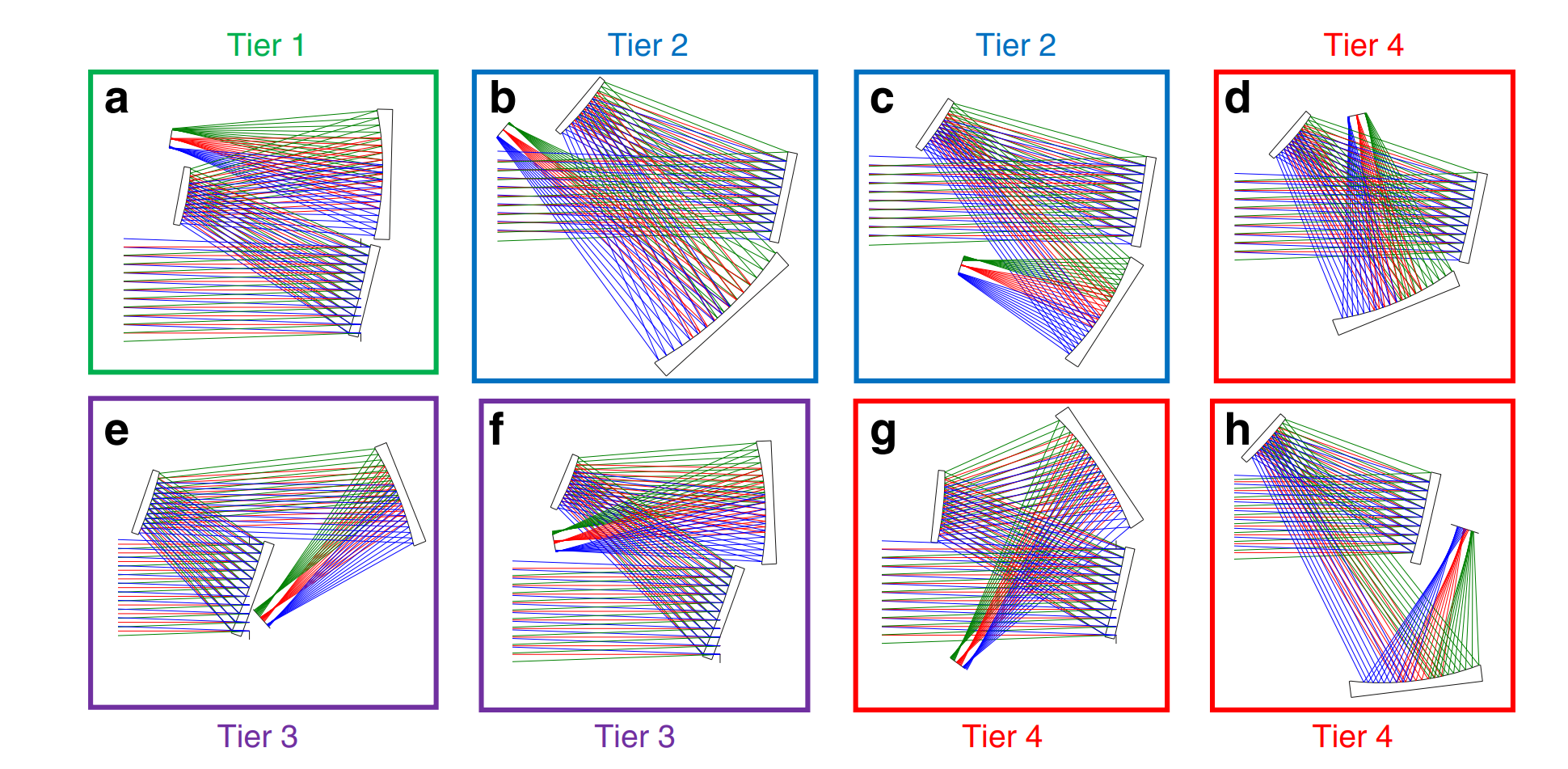The off-axis three-mirror optical system is an advanced optical design that achieves high-resolution and wide-field imaging through the combination of three mirrors. This system has wide applications in fields such as astronomical observation, military reconnaissance, and scientific experiments.
The off-axis three-mirror optical system typically consists of three main mirrors: the primary mirror (M1), the secondary mirror (M2), and the tertiary mirror (M3). The combination of these mirrors forms the optical path of the system, and through careful design, high optical performance can be achieved.
Unobstructed Design: The off-axis design avoids the obstruction of the central part of the optical system, thereby increasing the system’s light throughput. From the perspective of Fourier optics, the absence of central obstruction also prevents the modulation transfer function (MTF) curve from dropping at mid-frequencies, which helps improve image quality and target detection sensitivity.
High Resolution and Wide Field of View: If all three surfaces are aspheric or even freeform surfaces, the numerous variables available allow for precise optical design. The off-axis three-mirror system can achieve high-resolution and wide-field imaging simultaneously, making it suitable for applications requiring large-area observation, particularly in the design of push-broom cameras for remote sensing. It is important to note that the field of view of the off axis mirror optical system is often offset and lacks rotational symmetry, which may sometimes be constrained by the application scenario.
Wavelength and Environmental Versatility: As a purely reflective optical system, it does not produce chromatic aberration, making the off-axis three-mirror system well-suited for multi-wavelength detection systems or dual-color detectors. Additionally, athermalization essentially corrects the defocus of the optical system under different environmental conditions. If the three-mirror optical system uses the same material as the structural components for the substrate, the system will expand and contract proportionally with temperature changes, avoiding thermal aberration, which is a significant advantage.
Flexible Structural Design: The off-axis design by the optical components companies provides greater freedom for the optical system, allowing adjustments and optimizations based on different application needs. However, this structural design flexibility also poses challenges for optical system design. A current frontier research direction is the combination of optical system design with artificial intelligence to simplify preliminary work as much as possible.
Structural Forms and Optical Performance

The four types of structural forms are mainly distinguished based on the folding direction of the mirrors and the relative positions of the mirrors, with the following characteristics:
Tier 1 Design: Has the greatest potential for freeform surface correction. In this design form, the relative positions and angles between the mirrors are carefully designed to minimize initial aberrations to the greatest extent.
Tier 2 Design: Has some correction potential but is limited by volume. Compared to Tier 1 design, Tier 2 design makes some compromises in certain geometric parameters, resulting in slightly lower performance.
Tier 3 Design: Limited correction potential. This design has significant initial aberrations, and even with freeform surface correction, the final performance is not ideal.
Tier 4 Design: Minimal correction potential. This design has large initial aberrations, and the effect after freeform surface correction is still poor, making it difficult to meet high-performance imaging requirements.